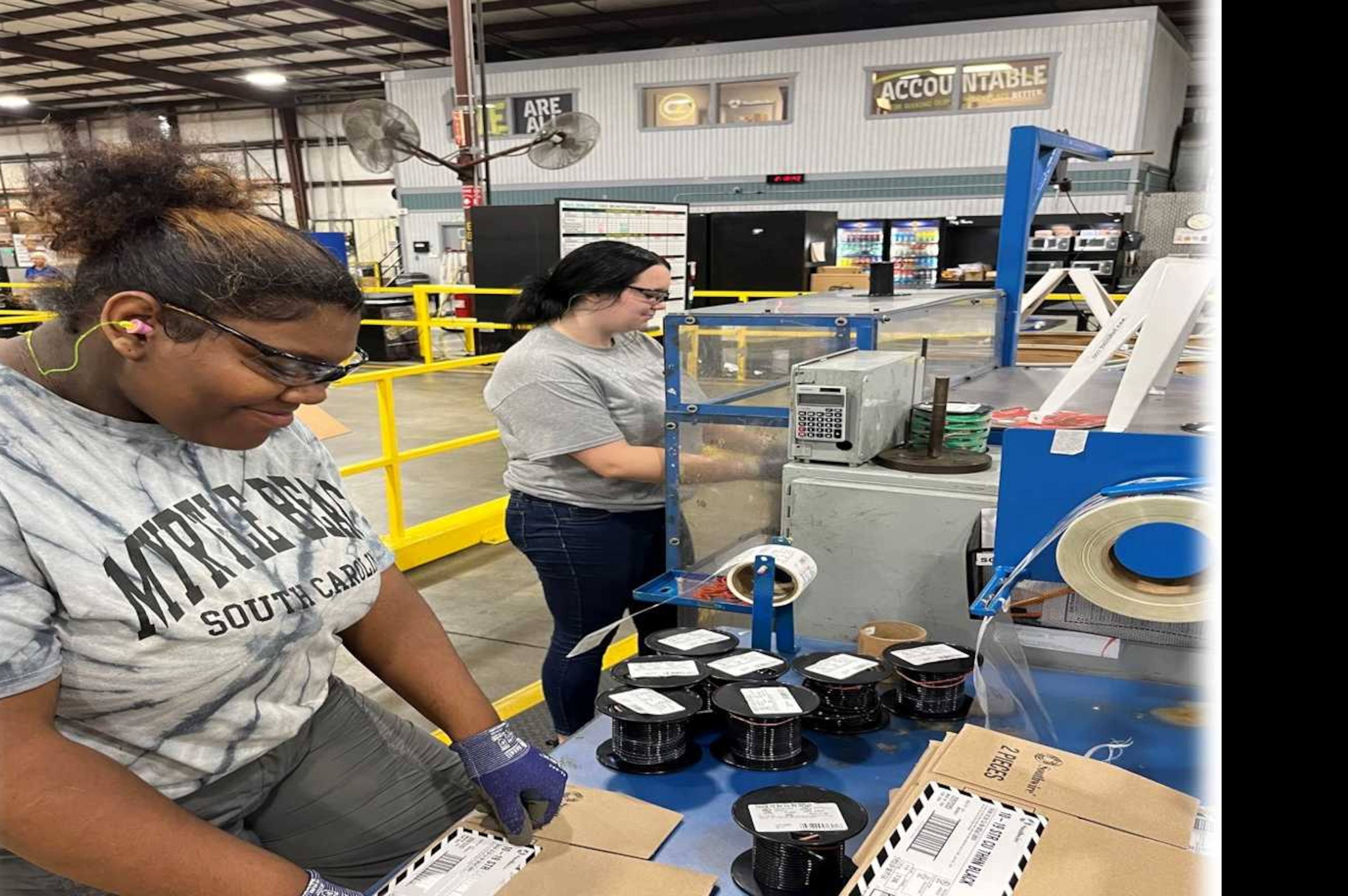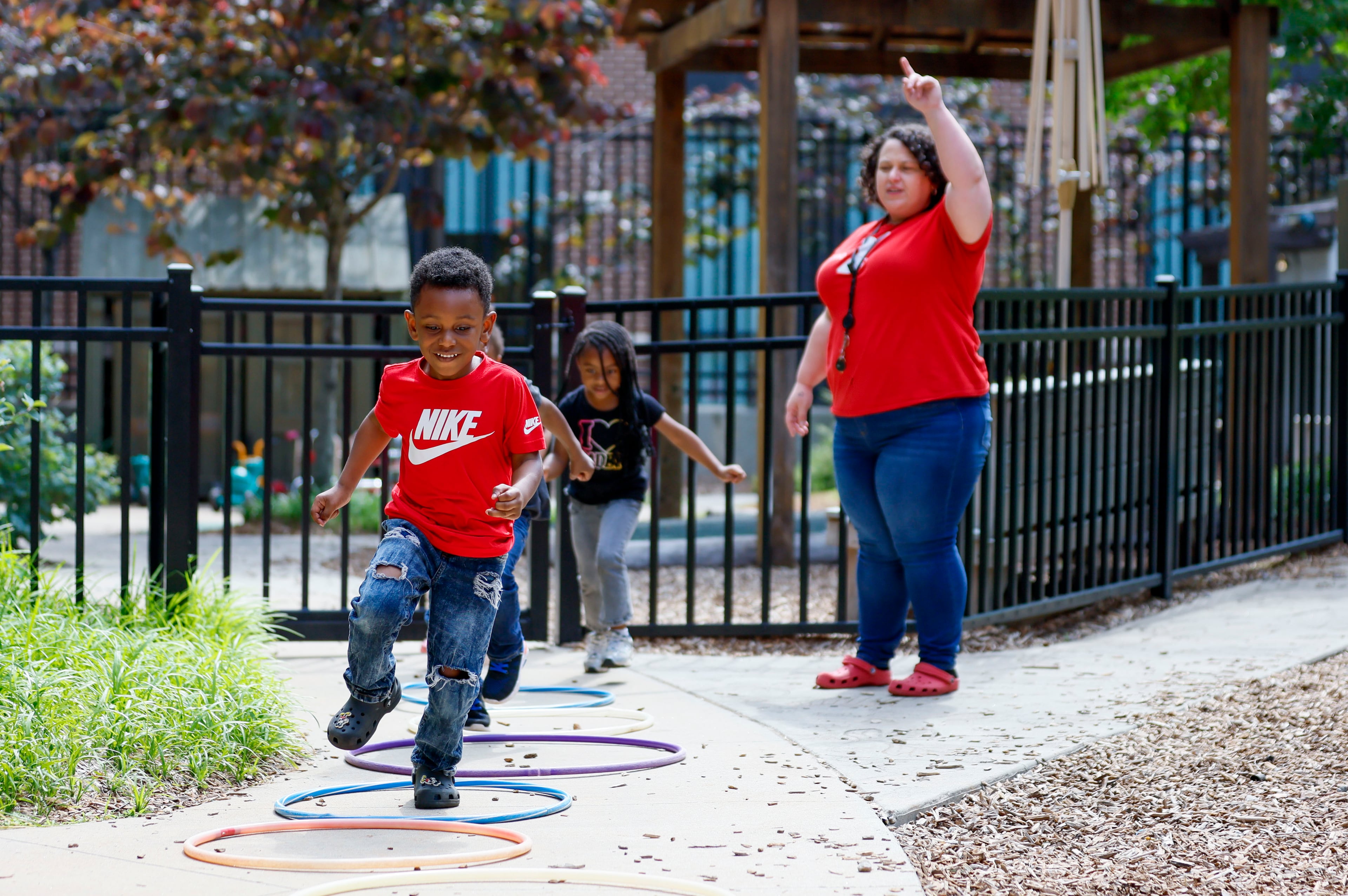This child care grant changes Georgia parents’ lives. Feds may cut it.

Druid Hills resident Michelle Roache never thought she was going to finish college.
The 38-year-old has two kids under 5 and has been in and out of school for years. It seemed impossible to get her degree while parenting.
The only thing that brought it within reach was a scholarship that covered more than half the cost of child care while she was in school.
The federal grant that funded the scholarship, called Child Care Access Means Parents in School, is a small one. But for parents like Roache, it’s a lifeline.
Without it, “I definitely would not have graduated college,” she said. “If I did not get this degree, I would not be living in this area I’m living in right now or making the money I’m about to be making. I’d still be living with my parents or living in a bad neighborhood.”
Now the funding that helped change her life is at risk.
The White House last month recommended cutting the program, arguing it is “unaffordable and duplicative.” It says there are other federal dollars to help parents pay for child care. Lawmakers are working over the next few months to finalize the federal budget and will use the recommendations from the executive branch as a guide.
“We’re really disappointed at the proposed elimination of this program,” said Jessica Woltjen, the senior policy manager for early childhood education at the Georgia Early Education Alliance for Ready Students. “The need already far exceeds the supply.”
About one in five undergraduate students in the U.S. are also parents, according to the most recent federal data. That’s more than 3 million people.
They’re in a tricky spot. Child care is more expensive than in-state tuition at a four-year university in Georgia, according to some research.
A 2019 Government Accountability Office report found that in 2016-2017, CCAMPIS helped about 3,300 parent students pay for child care; another 4,000 children were on waitlists. Since then, funding has increased from $15 million to $75 million annually. It still accounts for just .001% of the total federal budget.
Experts disagree with the White House’s assertion that the funding is “duplicative.”
CCAMPIS is just one piece of a complicated child care landscape in the U.S. One of the biggest federal investments comes through the Child Care Development Block Grant, which helps states provide subsidies to low-income families. But even that funding can’t keep up with the demand.
Georgia uses the block grant to fund the Childcare and Parent Services program, or CAPS. Of all of the income-eligible families in the state, only 15% receive scholarships through the program. And since 2022, more than half the student parents who applied for subsidized child care through CAPS were denied.
That’s why the CCAMPIS grant means so much to Porchia Lassiter. The single mother of a 5-year-old and a 17-year-old is working toward a nursing degree at Clayton State University. From 11 a.m. to 8 p.m. every day, she has two computer screens in front of her ― one for her job and one for her schoolwork ― while her youngest daughter is at summer camp. She doesn’t qualify for CAPS.

If she didn’t get help with child care through the grant, Lassiter said she wouldn’t be able to finish her degree.
“That’s just being honest,” the 37-year-old said. “I probably would fail just because all my focus will be going toward my child. I still have to work to keep a roof over our heads, so it’s like school will be pushed out.”
Six Georgia schools received a combined $2.7 million in CCAMPIS grants in 2023-2024, the last year data is available. Each school has flexibility in how it spends the funding. Clayton State, for example, partners with Quality Care for Children, an agency that connects parents and providers with child care resources, to distribute scholarships to qualified students. Since 2019, 123 parents have received scholarships to provide child care to 178 children.
Central Georgia Technical College, outside of Macon, has received CCAMPIS funding for seven years. It uses it to provide on-campus child care for students. In that time, it has helped 149 student parents and more than 180 children, said Brett Copeland, the director for child care centers at the school.
“There is nothing easy about being a parenting student, even with CCAMPIS,” Copeland said. But the funding boost can have an impact across generations. “It changes the trajectory for the parenting student and for the children alongside that.”
That’s what happened to Roache, who graduated in May with a bachelor’s degree in business administration from Clayton State. She is starting a new job at an insurance agency. She wants to give her kids a better future.
“It’s bigger than just the individual people in the school,” she said. “It’s their children, too.”



